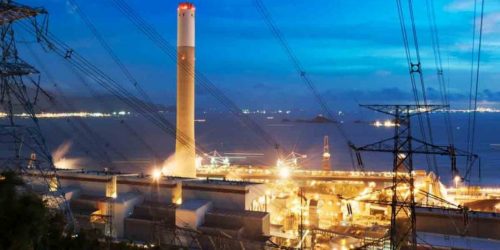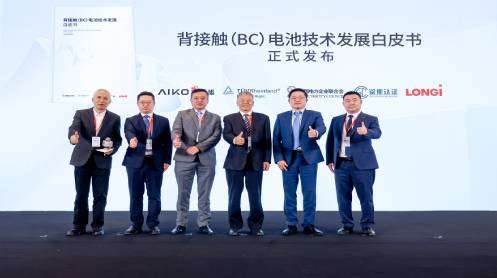Take a look into the not-so-distant future – a mere decade from now: 2030. Imagine Pakistan’s progress, both in terms of human development and its economy. Now consider how we get there. One thing will become clear: the roadmap must ensure sustainable growth of the power sector by addressing electricity access and affordability for all.
Pakistan’s ailing Energy Security Policies
Over the past few decades, the failures of Pakistan’s energy policies have resulted in a severe power crisis that has immensely impeded the country’s economic performance. In the late 2000s, power shortages reached over 40% of the national demand, and the country was estimated to be losing around 2% of GDP (USD 5-6 billion) annually due to energy shortages.
The inefficiencies faced by distribution companies, such as theft, line losses, and low bill recoveries, are contributing 60% to the ever-increasing circular debt, which is estimated to reach PKR 4 trillion by 2025. In recent years, Pakistan has added almost 12,000 MW of production capacity, with additional projects in the pipeline, creating an estimated 3,500 MW excess capacity by that time, but demand has only grown by 4% CAGR (compound annual growth rate) compared to a GDP growth of 5.3% CAGR between 2007-2019.
Read more: Thar Coal: Pakistan’s best bet to ensure energy security?
To make matters worse, the national exchequer faces a burden of around USD 5.5 billion as half of the generated electricity is through costly fuel imports. As an aggregate result, Pakistan has continued to lose its global competitiveness as its cost of power production is 26% higher for the industrial sector compared to other regional countries like Vietnam, Malaysia, Bangladesh, South Korea, Thailand, and India.

There is no short-term or instant fix to these complex challenges. To the PTI government’s credit, there is a willingness to introduce much-needed, market-based reforms for the provision of affordable and reliable electricity. A financially sound and viable power sector remains the key to expand rural electrification to 58 million unconnected people and achieve universal electricity access by 2030. The government’s successful negotiations with IPPs regarding rate of returns are a step in the right direction, but significant progress still needs to be made to implement a holistic framework to revive the power sector.
The government must liberalize the market to adopt a multi-buyer market model, reform distribution and transmission companies on a war footing, and work in partnership with IPP investors to catalyze Pakistan’s industrial growth and power demand. These reforms will also remove market distortions, discourage rent-seeking behavior, and reduce the discretionary power of regulators, all of which hamper the creation of a level playing field.
Read more: CPEC: Pakistan’s quest for energy security
While the government focuses on overcoming structural shortcomings of the power sector, Pakistan should promote indigenous resources and adopt a strategic approach to LNG imports, as local gas reserves deplete by around 7% every year. In view of advancements in technology and climate change commitments, the government has already expressed deep interest in promoting renewable energy solutions (solar and wind power) as part of the overall energy mix.
Thar Coal reserves are the world’s 7th largest – equivalent to the total energy reservoirs of Saudi Arabia and Iran – with the potential to generate up to 100,000 MW of electricity for many decades. By utilizing this low cost energy source, Pakistan can potentially save USD 1 billion on an annual basis. The first Thar coal-based power project and associated mine were commissioned in July 2019 as priority national projects and have since been fulfilling the requirement of base load power generation – which is the minimum level of demand on an electrical grid over a span of time. The supply of electricity to the national grid from Thar is a significant achievement given that it provides an indigenous fuel resource and curtails our reliance on foreign fuel.

The Economic Survey 2019-20 has noted that the use of coal in Pakistan’s energy mix is currently negligible, and the government is focused on increasing its contribution to 30% by the year 2030. This is in line with global projections of coal likely to gain greater prominence in the energy mix of most developing countries. As noted by Tabish Gauhar, Special Assistant to Prime Minister on Power, in his roadmap for the power sector, “we would also need to resist the international pressure to curtail our local coal expansion plan to fuel our future “base load” power generation needs even as the cost of “variable” renewable energy sources (such as wind, solar, and run-of-river hydro) continues to decline.
Read more: Pakistan Energy Mix: Overview of Gas Sector (Upstream)
With different caps, they complement each other and should not be viewed as mutually exclusive”. As a matter of fact, Pakistan’s contribution to global emissions is less than 1%, with the country ranked 135th for per capita carbon emissions. It is important to highlight that the Thar mine and coal-fired power projects have been designed, developed, and are being operated under all applicable regulatory environmental guidelines, including Sindh Environmental Quality Standards (SEQS) and voluntarily compliance with IFC (a subsidiary of the World Bank) emission and air quality standards.
Further, these projects have created positive externalities in the form of job opportunities for locals, skills-based training programs, improved public infrastructure, and civic services – including hospitals and schools, and access to clean drinking water. Recently, at the Climate Ambition Summit 2020, Prime Minister Imran Khan outlined his government’s vision to increase the share of renewable energy in power generation to 30% by 2030, while another 30% is to be produced from hydel resources.
Given that base load cannot be entirely replaced by renewables at this stage, and hydel is seasonal, thermal options remain critical to the country’s energy mix and the energy transition will have to be carefully managed. Over the last five years, Pakistan has emerged as a key market on the global LNG map. LNG has played an integral role in meeting Pakistan’s gas demand and contributes around 20% to the gas supply mix today.
Read more: Nuclear power: clean, cheap, and sustainable source of energy for Pakistan
The government realizes the need to set up new LNG terminals on a fast-track basis and favorable policies are being adopted to encourage private sector involvement in the LNG sector. Currently, at least five private sector companies, including Tabeer Energy, Energas, Pakistan GasPort, Trafigura, Engro, and Gunvor have expressed their interest in establishing LNG terminals in Pakistan.
Fixing Pakistan’s Energy Sector
Going forward, Pakistan needs to ensure that additional capacity of LNG handling and storage comes online in the quickest way possible through the expansion of existing LNG terminals. Expansion of the LNG terminals would mean that there is capacity available to benefit from the currently cheap LNG available in the spot market. The government is already focusing on the establishment of Third-Party Access and onshore LNG terminals to attract private investors.
The establishment of Third-Party Access would allow private players to acquire capacity in the existing and future terminals. As a result, there will be greater efficiency in the overall LNG supply chain, competition to procure cheaper LNG through spot/term contracts and sharing of responsibility by the private sector players as well to ensure consistent gas supply.
Read more: ExxonMobil scraps project to build LNG terminal in Pakistan
Further, this will encourage greater foreign investment in the LNG infrastructure and marketing services. A shift from terminals reliant on massive floating storage regasification units (FSRUs) towards onshore LNG terminals will ensure energy security by building a strategic national asset. These onshore terminals would both result in reduced foreign exchange outflow compared to FSRUs and create greater competition as multiple players would be allowed to acquire capacity in the terminal, based on an Open Access regime.
Further, it would make larger capacity available which shall be developed in a phased approach in view of the gas demand for uninterrupted supplies. At the same time, the government should also focus on increasing pipeline capacity to the north of the country and creating an enabling environment to attract foreign investment in the LNG sector. It is the need of the hour for all stakeholders to recognize that energy security is one of Pakistan’s most pressing issues today. It must be addressed correctly and swiftly in order to truly overcome the power sector’s challenges.
Without affordable and accessible electricity for all, Pakistan cannot be put on the path of industrialization. Therefore, in the new decade, timely actions based on holistic plans that prioritize national interest need to be materialized to ensure energy security for Pakistan and fuel the country’s sustainable growth.






